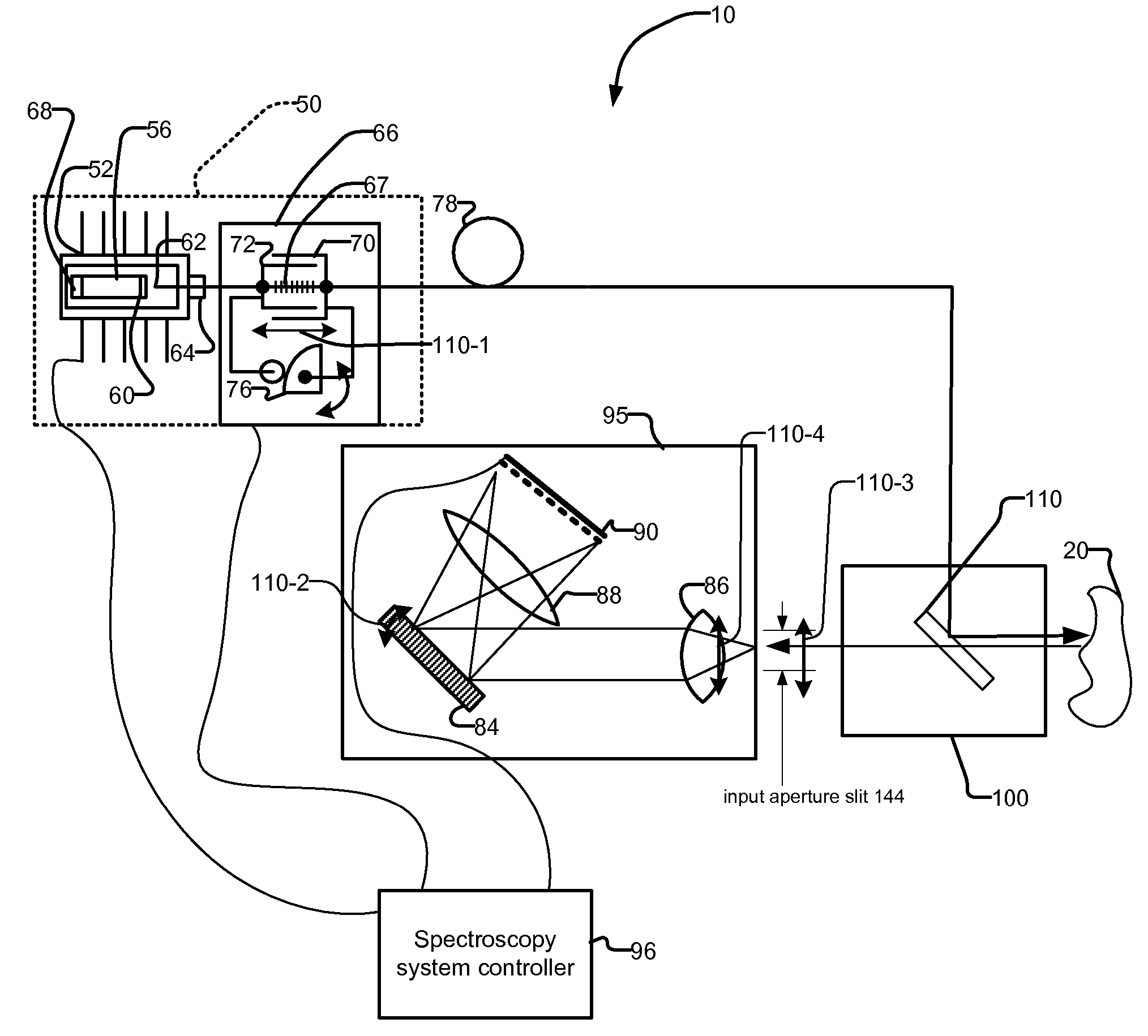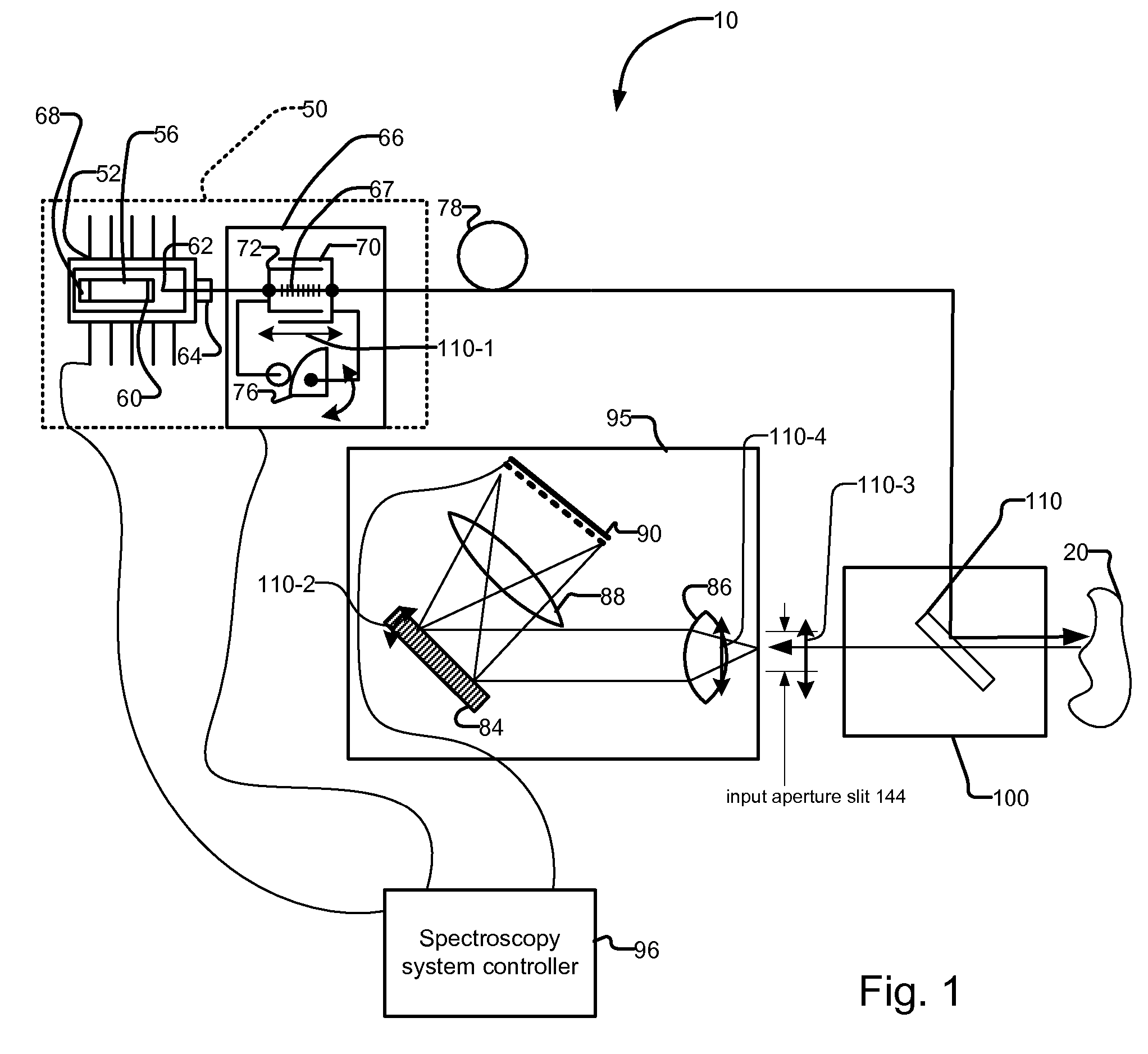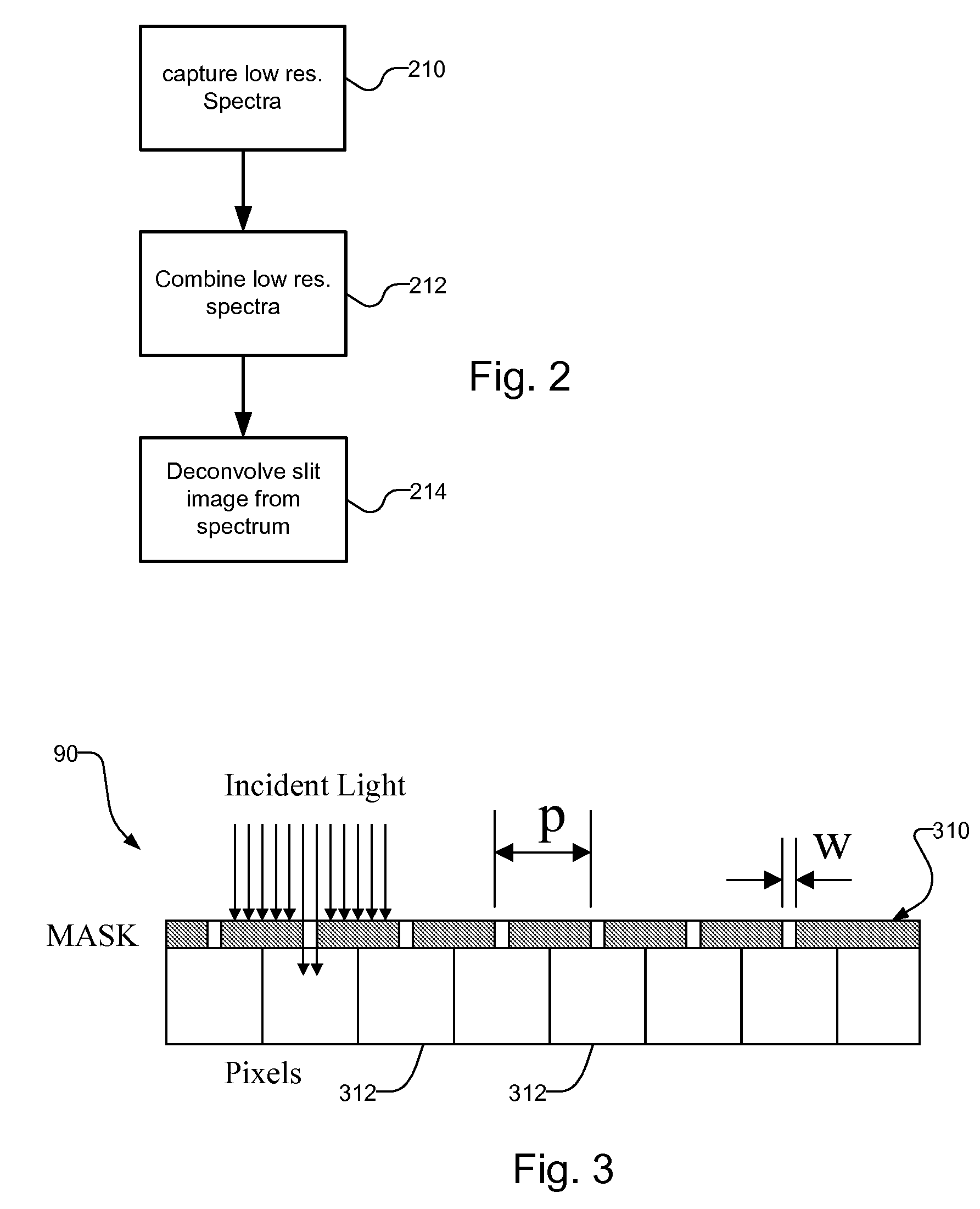Post Dispersion Spatially Filtered Raman Spectrometer
a raman spectrometer and spatial filtering technology, applied in the field of raman spectrometers, can solve the problems of reducing the input power, the return on resolution the rapid decline of the pixel size, so as to reduce the size and cost of the detector
- Summary
- Abstract
- Description
- Claims
- Application Information
AI Technical Summary
Benefits of technology
Problems solved by technology
Method used
Image
Examples
second embodiment
[0043]FIG. 3 illustrates a configuration of the detector array 90 used in the present invention. This embodiment avoids the need to perform the deconvolution step.
[0044] The second embodiment achieves the effective resolution by masking the detector array 90 itself using a physical aperture mask 310. The aperture mask has the same pitch, p, as the detector elements 312 but the transmission width, w, is equal to the desired effective pixel size.
[0045] The pattern, or mask, 310 is preferably aligned precisely during the fabrication of the detector array 90. The transmission width is roughly centered on a pixel of the array. In this way, each detector pixel 312 responds to light from one and only one mask window whose width is the desired effective pixel size. This eliminates detector pixel crosstalk and if the mask is made by photolithographic techniques, it will approximate an ideal rectangle sampling function.
[0046] Then, the multiple spectra sampled with this mask 310 are prefera...
first embodiment
[0048] As in the first embodiment, deconvolution with the entrance slit image can be performed if required provided the Nyquist sampling is satisfied and the optics are sufficiently flat field. Alternatively, if the input slit is sufficiently narrow, no deconvolution is required, provided the mask can be fabricated with sufficiently narrow slit width w to achieve the desired resolution. This allows the minimum detector area to be realized, i.e., that for which the spectral resolution element is no larger than the smallest required to achieve the target SNR requirement. The penalty for this small size is that the mask only allows a small fraction of the incident light to strike a detector pixel. Due to the convolution of the spectrum with the image of the entrance slit, this corresponds to an extra insertion loss. The magnitude of the loss is estimated as IL=10*log(w / (Slit Image)).
[0049] For either embodiment, the total spectrum shift required in the low-resolution images is equal to...
PUM
| Property | Measurement | Unit |
|---|---|---|
| Raman | aaaaa | aaaaa |
| Raman spectra | aaaaa | aaaaa |
| wavelength | aaaaa | aaaaa |
Abstract
Description
Claims
Application Information
 Login to View More
Login to View More - R&D
- Intellectual Property
- Life Sciences
- Materials
- Tech Scout
- Unparalleled Data Quality
- Higher Quality Content
- 60% Fewer Hallucinations
Browse by: Latest US Patents, China's latest patents, Technical Efficacy Thesaurus, Application Domain, Technology Topic, Popular Technical Reports.
© 2025 PatSnap. All rights reserved.Legal|Privacy policy|Modern Slavery Act Transparency Statement|Sitemap|About US| Contact US: help@patsnap.com



